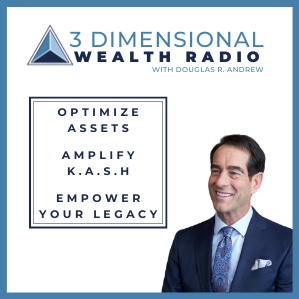What will a properly structured, maximum-funded Indexed Universal Life policy cost you?
Let’s start with how much a max-funded IUL insurance policy will give you: unparalleled liquidity, safety, predictable rates of return, and tax advantages (tax-free income, and income-tax-free transfer to your heirs upon death). Will your IUL policy incur any expenses? Like most financial vehicles, of course it will–your policy costs will include premium charges, admin fees, expense charges, and cost of insurance.
So, the real question is what can a max-funded IUL insurance policy make you (assuming it’s properly structured)? Knowing the answer to this question is key to understanding the financial benefit of max-funded IUL insurance policies.
To understand this further, let’s compare that to owning your own business. Let’s say you hire a CTO to oversee your technology operations. Will that CTO cost you money? Of course. But will her salary, say $200,000 be worthwhile when her innovative leadership nets the company $2 million this year? Absolutely.
DIVE DEEPER: Max-Funded IUL Insurance Policies
Let’s dive in a little deeper to explore the issues around cost of insurance.
You might have heard that maximum-funded Indexed Universal Life policies (what I call LASER Funds) are too expensive to use as a capital accumulation tool. But this is one of the biggest misperceptions. In the book I co-authored with my sons, “The LASER Fund,” we discuss that many uninformed financial professionals repeat this “insurance is too expensive” myth, without stopping to really understand and compare the costs.
They often point to the first few years of a LASER Fund, when the costs are higher than many other financial vehicles during that time-frame. But as we illustrate in “The LASER Fund,” in Section I, Chapter 10, LASER Funds are a long-term financial vehicle, and when you treat them as such (properly structuring and funding your IUL policy over time), they can yield cost-effective results.
Once you get into Years 3 to 6, the LASER Fund often begins to pay for itself. In the long run, it’s among the least expensive vehicles, with an average of 1% to 2% in policy charges.
Properly structured, maximum-funded IUL policies have earned historical average returns of 5% to 10%. So let’s say this year your policy earns 10% and your charges are around 1%; if this is the case, then that means you are netting 9%. Returns can even be higher in some years; we have clients who earned 16% and then netted 15%.
Essentially, that one percentage point is paying for all the fees AND the insurance (which can grow tax-free and pass along to your heirs income-tax-free). To me, that’s not a cost. That’s an opportunity.
Because of LASER Funds’ superior tax advantages, if I’m earning 11% in a given year and netting 10%, I’m happy. I’d have to be earning 15% in a tax-deferred account, like an IRA or 401(k), to be able to net 10% after-tax–and after fees I’m only netting 9. In a properly structured IUL, I only have to earn 10% to net 9%, and personally I’ve done that predictably for 25 years.
Comparing Max-Funded IUL Insurances Policies to Other Financial Vehicles
In “The LASER Fund” book, in Section I, Chapter 10, we delve into comparisons between maximum-funded IUL policies and traditional financial vehicles, like a 401(k) and an after-tax account with tax-deferred growth and LIFO distribution–like a brokerage account or a managed money account.
You might find that comparison helpful, to see illustrations of how fees and taxes impact the performance of each vehicle over time. Most important, you can compare how each vehicle can provide for retirement income, since that’s what most of us wonder: What kind of supplemental retirement income can I count on during my golden years?
When it comes to the benefits of tax-free growth, tax-free access to income, AND income-tax-free transfer of wealth to your heirs…the way I see it, the cost of your IUL policy is paying for itself. So again, it’s not a matter of “What does it cost?” It’s all about “What does it make you?”
If you want to see how to make an insurance contract get cheaper as you get older, it’s all in the book. I invite you to explore it for yourself.
Want to Learn More About Max-funded IUL Insurance Policies?
Watch the Video – Watch the related YouTube video to see me explain “How Much Does a Max-funded IUL Insurance Policy Cost?” (and while you’re there, be sure to subscribe to my YouTube channel so you don’t miss a thing!).
Elevate Your Financial Dimension – Find out how you can improve your Financial Dimension journey and seize the liquidity, safety, predictable rates of return, and tax advantages of a LASER Fund. Explore the in-depth financial strategies and learn from real-life client experiences by claiming your free copy of “The LASER Fund” book at LASERFund.com. Just pay for shipping and handling, and we will send it to you, absolutely free.
Join a Webinar – Want to find out if a LASER Fund (a maximum-funded, properly structured indexed universal life insurance policy) is right for you? Join us for an upcoming webinar where you can explore these strategies.
We hope you enjoyed this article on the cost of Max-Funded IUL Insurance Policies. You can stay up to date on all of our blogs using this link.




